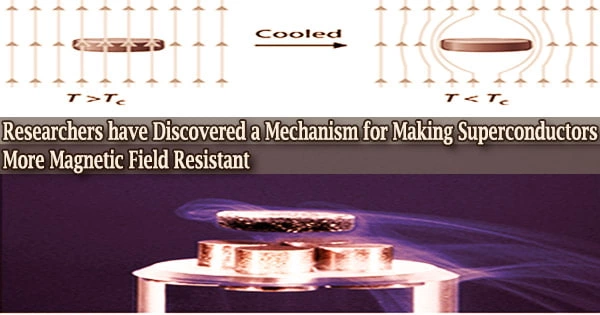Since humans began creating the resources we employ to build our infrastructure, natural forces have outsmarted them. Every year, ice and snow turn main roadways into a mess, and despite having robust structures, house foundations nonetheless break and fall apart.
In addition to the masses of debris generated by the shattered pieces of concrete, maintaining each lane-mile of road costs the U.S. over $24,000 annually. By adding more carbon to materials, engineers solving this problem with smart materials often increase function while reducing mechanical performance.
Researchers from Northwestern University have created a smarter, more resilient, and highly useful cement by incorporating nanoparticles into regular cement. The study was released in the Philosophical Transactions of the Royal Society A journal today, June 21, 2021.
Ange-Therese Akono, a professor of civil and environmental engineering, turned to nano-reinforced cement to find a solution because cement is the most frequently used material worldwide and the cement sector is responsible for 8% of human-caused greenhouse gas emissions.
Nanomaterials lessen the carbon footprint of cement composites, according to Akono, the study’s lead author and an assistant professor at the McCormick School of Engineering, but little is known about how they affect fracture behavior.
“The role of nanoparticles in this application has not been understood before now, so this is a major breakthrough,” Akono said. “As a fracture mechanics expert by training, I wanted to understand how to change cement production to enhance the fracture response.”
Traditional fracture testing, which includes casting a number of laser beams onto a substantial block of material, takes a lot of time and resources and rarely results in the discovery of new materials. Akono’s lab quickly and effectively made predictions about the material’s qualities by employing the cutting-edge technique of scratch testing.
The role of nanoparticles in this application has not been understood before now, so this is a major breakthrough. As a fracture mechanics expert by training, I wanted to understand how to change cement production to enhance the fracture response.
Professor Ange-Therese Akono
By pressing a conical probe against the surface of small cement particles with increasing vertical force, the approach assesses fracture response. Akono, who created the revolutionary approach during her doctoral research, claimed it uses less resources and hastens the discovery of fresh ones.
“I was able to look at many different materials at the same time,” Akono said. “My method is applied directly at the micrometer and nanometer scales, which saves a considerable amount of time. And then based on this, we can understand how materials behave, how they crack and ultimately predict their resistance to fracture.”
Engineers can modify materials to improve their performance on a bigger scale using predictions derived from scratch tests. The resistance to fracture of regular cement was enhanced in the study using graphene nano-platelets, a material that is quickly gaining prominence in the formation of smart materials.
With observed relative drops of 76% and 78%, respectively, the incorporation of a modest amount of the nanomaterial also improved water transport parameters including pore structure and water penetration resistance.
The work has implications for many different industries, such as building construction, road maintenance, sensor and generator optimization, and structural health monitoring.
According to UN estimates, cities will be home to two-thirds of the world’s population by 2050. Cement production is anticipated to increase dramatically given the trend toward urbanization.
By lengthening maintenance schedules and minimizing waste, the introduction of green concrete that uses lighter, higher-performing cement would lessen its overall carbon footprint.
Alternately, smart materials enable cities to accommodate the connection, energy, and multipurpose needs of expanding populations. Smart cement-based sensors for structural health monitoring are already being designed with carbon-based nanomaterials, such as graphene nano-platelets, in mind.
Akono expressed her excitement for both the lab’s own follow-ups on the publication and the effects her work will have on other people. She is currently working on suggestions that examine the use of demolition debris to create fresh concrete and is thinking about “taking the paper farther” by increasing the proportion of nanomaterials that cement includes.
“I want to look at other properties like understanding the long-term performance,” Akono said. “For instance, if you have a building made of carbon-based nanomaterials, how can you predict the resistance in 10, 20 even 40 years?”
The National Science Foundation Division of Civil, Mechanical and Manufacturing Innovation (award number 18929101) provided funding for the study, “Fracture toughness of one- and two-dimensional nano reinforced cement via scratch testing.”
Akono will give a talk on the paper at The Royal Society’s October meeting, “A Cracking Approach to Inventing Tough New Materials: Fracture Stranger Than Friction,” which will highlight major advances in fracture mechanics from the past century.
















